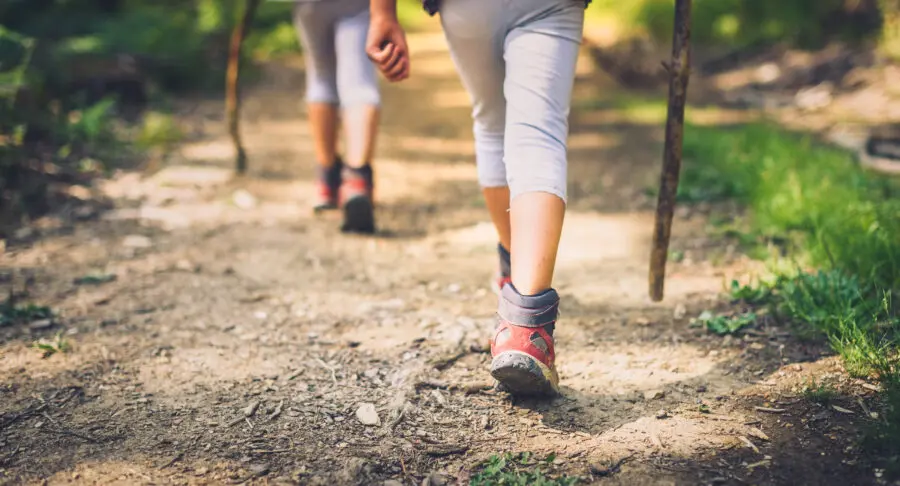
Want to start hiking but not sure which shoes to get? That’s a good question! If the present pandemic has taught us anything, it is to enjoy nature and the outdoors.
However, before you hit the trails, make sure you have the proper footwear. Foot pain can be avoided if you use the appropriate hiking equipment. Choosing the right shoes for hiking :
Making the best choice in hiking shoes
Make sure you have the proper shoes for your hike, regardless of the type. You’ve taken the water bottle, the backpack that’s neither too tiny nor too hefty, the snacks for the munchies, and the cold-weather clothing, but have you considered your feet? The quality of your journey is entirely dependent on them.
If your feet are inadequately or harshly shod, they will be put to the test. It’s not the time to put on new shoes during a day in the mountains!
You’ll need to wear shoes that are suited for the sort of hiking you’ll be doing, as well as the terrain you’ll be traversing.
Getting the right shoes for hiking
Hiking footwear should be chosen with attention and in accordance with the terrain. Above all, be certain that you purchase the correct size. Your feet are a touch tight, but you assume that with time, they’ll loosen up. Don’t take a gamble since walking in shoes that are too small may give you discomfort and make your journey less enjoyable. Also, ill-fitting shoes will cause blisters.
Don’t be afraid to go to a store that specializes in athletic footwear. The advisers will be competent and be able to assist you in selecting the ideal pair of shoes.
For treks in the city or on well-kept paths, you’ll need light hiking shoes. Your journey, however, may take you across difficult terrain or entail some high hills. In this scenario, short hiking boots are the way to go. These boots are generally fitted with crampons and provide excellent ankle support, preventing sprains.
Long hiking boots are required for a longer journey, such as one with a rucksack and camping supplies. These boots are designed to handle any terrain you may encounter when walking. Because of its strong support, they will effectively safeguard your feet.
Taking care of your feet while hiking
Apart from falls, sprains, blisters, and other problems, the enemy of your feet when trekking is ill-fitting footwear and dampness. If your feet sweat a lot, bringing a change of socks is a smart idea. Many problems, such as athlete’s foot, bacterial or fungal infections, can be avoided by keeping your feet dry.
Remove your shoes and socks during breaks to allow your feet to breathe. You may want to use your spare socks. Bring some antiperspirant foot powder or spray as well. Anti-friction strips or balm may also be beneficial, particularly if you will be walking for lengthy periods of time.
If possible, hiking boots or shoes should be breathable and waterproof.
Problems caused by ill-fitting hiking shoes
We’ve discussed the significance of hiking footwear and foot health. In addition to the complications related to excessive foot perspiration, other consequences can occur, including:
Plantar fasciitis: If you have flat feet, hiking could be the cause of plantar fasciitis. Another example is sporting worn-out shoes.
Achilles tendinitis: Although this is a problem most commonly associated with runners, it can also affect hikers due to ill-fitting shoes.
Blisters: Many severe blisters are caused by a shoe that is too large, causing your foot to shift and rub.
Before returning to trekking, see a podiatrist right away. The health of your feet and your overall well-being depend on it.
The importance of a well-planned trek
Hiking is an activity that anybody can participate in, whether it’s in the summer or the winter. It’s a unique opportunity to connect with nature. There are also various advantages for the locomotor structure and cardiovascular system. Go at your own speed, and if you’re a novice, start with the easy routes and work your way up to the more challenging ones as you acquire expertise.
Above all, don’t overlook the comfort of your feet; it will determine how much enjoyment you have from exploring outdoors.
Have you put your feet to the test on your most recent hike? Please do not hesitate to contact PiedRéseau podiatrists.